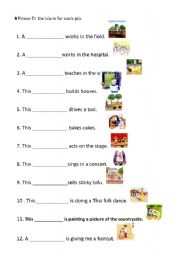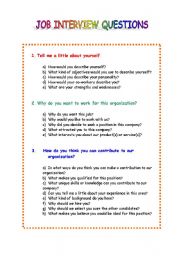The Authorization Code Grant Type is probably the most common of the OAuth 2.0 grant types that you’ll encounter. It is used by both web apps and native apps to get an access token after a user authorizes an app.
This post is the first part of a series where we explore frequently used OAuth 2.0 grant types. If you want to back up a bit and learn more about OAuth 2.0 before we dive in, check out What the Heck is OAuth?, also on the Okta developer blog.
What is an OAuth 2.0 Grant Type?

In OAuth 2.0, the term “grant type” refers to the way an application gets an access token. OAuth 2.0 defines several grant types, including the authorization code flow. OAuth 2.0 extensions can also define new grant types.
Each grant type is optimized for a particular use case, whether that’s a web app, a native app, a device without the ability to launch a web browser, or server-to-server applications.
Aimersoft Dvd Creator 2.6 5 Serial Isabelle Animal Crossing Ttoffline Custom Launcher Faded Alan Walker Torrent R2r Omnisphere Incorrect Code Download Font Decotype Naskh Variants Free Autocad 2002 Full Version Crack Keygen Big Sean 1st Quarter Freestyle Mp3 Car Seats For 96 Honda Prelude.
The Authorization Code Flow
The Authorization Code grant type is used by web and mobile apps. It differs from most of the other grant types by first requiring the app launch a browser to begin the flow. At a high level, the flow has the following steps:
- Start DAW software. Open an instance of Omnisphere and copy the challenge code and paste it in the keygen. Generate Response code and copy it in the Omnisphere proper box. Now you have Omnisphere 2.5 Full Version. Restart Omnisphere to finish the registration process.
- This video shows how to install Omnisphere on your Receptor2/VIP/Qu4ttro/Trio.
- Load an instance of Omnisphere 2, and it will give you a Challenge Code. Hit the button 'Copy' near the Challenge Code text. 2) Paste the code into R2R Tool's smaller text box, located above the three buttons. 3) Hit the 'Generate' button after this and copy the code it generates in the lower, big text box.
- . I installed Omnisphere 2 without a problem but need the keygen in order. With the challenge code and same response code for authorization. spectrasonics omnisphere 2.3 free download includes more than 3,000 new patches and sources of sound, along with EDM library that provides current sounds. did use patch the plugin frist?
- The application opens a browser to send the user to the OAuth server
- The user sees the authorization prompt and approves the app’s request
- The user is redirected back to the application with an authorization code in the query string
- The application exchanges the authorization code for an access token
Get the User’s Permission
OAuth is all about enabling users to grant limited access to applications. The application first needs to decide which permissions it is requesting, then send the user to a browser to get their permission. To begin the authorization flow, the application constructs a URL like the following and opens a browser to that URL.
Getting Authorization Code For Omnisphere 2018
Here’s each query parameter explained:
response_type=code- This tells the authorization server that the application is initiating the authorization code flow.client_id- The public identifier for the application, obtained when the developer first registered the application.redirect_uri- Tells the authorization server where to send the user back to after they approve the request.scope- One or more space-separated strings indicating which permissions the application is requesting. The specific OAuth API you’re using will define the scopes that it supports.state- The application generates a random string and includes it in the request. It should then check that the same value is returned after the user authorizes the app. This is used to prevent CSRF attacks.
When the user visits this URL, the authorization server will present them with a prompt asking if they would like to authorize this application’s request.
Redirect Back to the Application
If the user approves the request, the authorization server will redirect the browser back to the redirect_uri specified by the application, adding a code and state to the query string.
For example, the user will be redirected back to a URL such as
The state value will be the same value that the application initially set in the request. The application is expected to check that the state in the redirect matches the state it originally set. This protects against CSRF and other related attacks.
The code is the authorization code generated by the authorization server. This code is relatively short-lived, typically lasting between 1 to 10 minutes depending on the OAuth service.
Exchange the Authorization Code for an Access Token
We’re about ready to wrap up the flow. Now that the application has the authorization code, it can use that to get an access token.
The application makes a POST request to the service’s token endpoint with the following parameters:

grant_type=authorization_code- This tells the token endpoint that the application is using the Authorization Code grant type.code- The application includes the authorization code it was given in the redirect.redirect_uri- The same redirect URI that was used when requesting the code. Some APIs don’t require this parameter, so you’ll need to double check the documentation of the particular API you’re accessing.client_id- The application’s client ID.client_secret- The application’s client secret. This ensures that the request to get the access token is made only from the application, and not from a potential attacker that may have intercepted the authorization code.
The token endpoint will verify all the parameters in the request, ensuring the code hasn’t expired and that the client ID and secret match. If everything checks out, it will generate an access token and return it in the response!
The Authorization Code flow is complete! The application now has an access token it can use when making API requests.
When to use the Authorization Code Flow
The Authorization Code flow is best used in web and mobile apps. Since the Authorization Code grant has the extra step of exchanging the authorization code for the access token, it provides an additional layer of security not present in the Implicit grant type.
Getting Authorization Code For Omnisphere 2019
If you’re using the Authorization Code flow in a mobile app, or any other type of application that can’t store a client secret, then you should also use the PKCE extension, which provides protections against other attacks where the authorization code may be intercepted.
The code exchange step ensures that an attacker isn’t able to intercept the access token, since the access token is always sent via a secure backchannel between the application and the OAuth server.
Learn More About OAuth and Okta
You can learn more about OAuth 2.0 on OAuth.com, or check out any of these resources to get started building!
Or hit up Okta’s OIDC/OAuth 2.0 API for specific information on how we support OAuth. And as always, follow us on Twitter @oktadev for more great content.
PS: We recently built a new security site where we’re publishing lots of other security-focused articles (like this one). You should cehck it out!